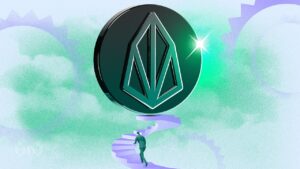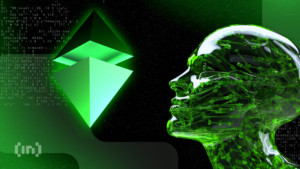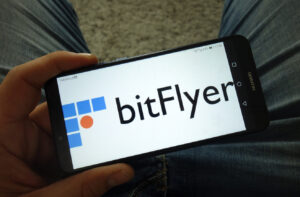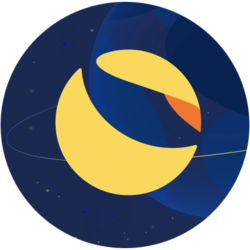What Are Polkadot’s Parachain Auctions?

Key Takeaways
The Polkadot ecosystem will host projects on individual networks called parachains.
The first Polkadot parachain auction is set to begin Nov. 11.
Acala, Moonriver, and Phala are three standout projects hoping to launch on Polkadot.
Share this article
The Polkadot ecosystem is preparing for one of its biggest events to date: the launch of parachain auctions.
Polkadot Prepares for Parachain Auctions
Layer 1 smart contract platforms like Solana, Avalanche, and Cardano have exploded in recent months. Polkadot is a similar network with big potential, but it takes a different approach to other Layer 1 blockchains by allowing for multiple chains known as parachains to be built onto the Polkadot network. Polkadot’s founder Gavin Wood touts the network as “a bet against blockchain maximalism.”
The Polkadot network is comprised of a core relay chain to which several parachains connect. Each parachain acts a separate blockchain but comes with built-in interoperability with all other parachains on Polkadot. Parachain slots are limited, so competition is fierce over which projects will be able to secure them through the parachain auctions.
The upcoming parachain auctions are a key steps towards Polkadot achieving its mission to become a scalable multi-chain network. This feature explores parachain auctions and some of the most prominent projects that could be joining the network in the coming months.
What Is Polkadot?
Polkadot’s name itself goes some way to explaining how the project works. The Polkadot network can be thought of as an array of circles on a canvas, where each circle represents a different project. Polkadot is the base layer each project is built on. Projects that connect to Polkadot will be interoperable with one another, and every parachain will leverage the security of the Polkadot network while maintaining its own governance structure. Additionally, Polkadot says it is “future-proof” because it can upgrade without hardforks (other similar blockchains like Ethereum regularly complete hardforks for major upgrades).
Polkadot’s Relay Chain launched its mainnet in May 2020, and its DOT token is currently the eighth largest cryptocurrency by market capitalization. Prior to launching Polkadot, Wood played a major role in the development of Ethereum and Solidity, the programming language for apps that run on Ethereum. He went on to set up the Web3 Foundation and Parity Technologies, the teams behind Polkadot, Kusama, and the Substrate programming language.
Polkadot is frequently described as an “Ethereum killer,” though Wood has previously disagreed with this characterization. He recently said that just as one should not bill Microsoft as a Chrysler killer, one should not bill Polkadot as an Ethereum killer.
Polkadot has four main components: the Relay Chain, parachains, parathreads, and bridges. The Relay Chain can be thought of as Polkadot’s heart. Parachains connect to it when they join the network. The Relay Chain itself does not support smart contracts and it only handles a small number of transaction types such as staking.
The slots parachains connect to are similar to cores on a computer processor. Bridges, meanwhile, connect parachains and parathreads to external networks such as Ethereum. Parachains are individual blockchains. Parachain auction winners can lease a slot for up to two years. Parathreads, meanwhile, allot eligibility for up to six months on a pay-as-you-go basis.
To achieve consensus, Polkadot needs to fill four roles: nominators, validators, collators, and fishermen. Nominators stake DOT to validators they deem as trustworthy in order to secure the relay chain. Validators also make sure that every parachain “state” sent by collators is correct. Collators maintain parachains and participate in consensus. Fishermen report bad behavior to validators; the role can be filled by both collators and parachain nodes.
What Are Parachain Auctions?
The parachain slot auction process was initially tested on Kusama, Polkadot’s Canary Network. On Oct. 13, the Polkadot community approved a proposal to launch parachain auctions. They’re set to commence Nov. 11, with an initial 11 slots due to be auctioned. Eventually, Polkadot is expected to host 100 parachains in total.
The first 11 auctions will be split into two batches: the first batch will be auctioned weekly from Nov. 11, while the second batch will be auctioned fortnightly from Dec. 23. Each auction will last seven days.
The auctions will adopt a modified version of the candle auction format. The winner of each auction will be determined by which project has the most DOT backing it at a randomly selected point. Polkadot will use this methodology to prevent last-minute bidding wars. Parachain auctions can reward leases of up to two years, while leases up to six months are available for parathreads.
Initial Parachain Offerings
Many different types of projects can run on a parachain. These include DeFi applications, digital wallets, Internet of Things applications, GameFi projects, and Web 3.0 infrastructure.
As the winning parachain slots go to projects with the highest DOT contribution at the end of the auction, many projects are unable to contribute enough DOT to secure a slot. This is where crowdloans come in.
The so-called “Initial Parachain Offering” (a play on Initial Public Offering for equities) allows DOT holders to contribute funds to a project they want to support, as long as they live in a region that is not restricted from participating in the crowdloan. Many crowdloans have already taken place on Kusama, with hundreds of projects hoping to integrate onto the Polkadot network. It is worth noting that the Web3 foundation could potentially influence the projects that win slots through grants or DOT contributions—it’s already funded several Polkadot projects.
Some projects have adopted strategies such as rewarding DOT contributors through airdrops. Any DOT contributed to a project for an auction gets locked until the lease expires. At that point, the project has the option to enter a new auction to win the slot again.
It is worth noting that Polkadot also has its own “Common Good Parachains.” Slots can be allocated if it is perceived to benefit the overall network, “without requiring a bond, in perpetuity.” Such slots might be filled by a sophisticated governance chain or bridges.
Polkadot Projects to Watch
Many projects are currently being built in preparation for the full launch of the Polkadot ecosystem. Perhaps the most notable to date are Acala, Moonbeam, and Phala.
Acala
Acala is aiming to become the go-to DeFi protocol for Polkadot. It’s scalable, optimized for DeFi and offers EVM compatibility. Acala’s key products include an automated market maker, a decentralized stablecoin, liquid DOT staking, and Ethereum interoperability.
Acala was founded in 2019, and has many prominent backers including Coinbase Ventures and Pantera. One of its founders, Fuyao Jiang, built the Polkadot-focused mobile wallet Polkawallet. Moreover, it has received several grants from Gavin Wood’s Web3 Foundation. Acala’s sister network, Karura, won the first slot auction on Kusama after raising over 500,000 KSM tokens. Karura currently has roughly $280 million in total value locked.
Acala will reward DOT contributors with ACA tokens, though full details on the distribution are still to be confirmed.
Moonbeam
Moonbeam is a decentralized smart contract platform that seeks to help integrate Polkadot parchains and connect them to other blockchains like Bitcoin and Ethereum. It bills itself as “the easiest path to multi-chain.” Moonbeam’s sister chain, Moonriver, won the second Kusama auction after raising 205,000 KSM. Dozens of existing projects are already building on Moonbeam, including Chainlink and SushiSwap.
Moonbeam’s native token is GLMR. 10% of the genesis GLMR supply is due to be allocated to crowdloan contributors, though registration to the crowdloan is limited to those in certain regions.
Phala
Phala is a decentralized, privacy-preserving database that has smart contract functionality. Founded in 2018, it’s one of the earliest projects hoping to launch on Polkadot. Given the public, transparent nature of information on blockchains, Phala allows for confidential or sensitive data to be handled by the blockchain. As technologies like ring signature and zk-SNARKS focus on providing privacy for cryptocurrencies rather than smart contracts, Phala offers a unique use case, dubbing itself as the “Global Confidential Compute Cloud.”
Phala’s PHA token is already tradable on open markets as an ERC-20 token. Like Acala and Moonbeam, Phala has a large community, which may be a sign that it will have significant crowdloan support in the upcoming parachain auctions. Phala has also received grants from the Web3 foundation.
Parachain Auctions and the Future for Polkadot
It’s clear that many people are betting on the multi-chain, anti-maximalism world that Polkadot is hoping to bring: the DOT token has risen roughly 380% since its recent July lows. Parachain auctions could usher in a significant new phase for the ecosystem as it takes a step closer toward achieving interoperability.
Disclaimer: At the time of writing, the author of this feature held DOT, ETH, BTC, and several other cryptocurrencies.
Share this article
The information on or accessed through this website is obtained from independent sources we believe to be accurate and reliable, but Decentral Media, Inc. makes no representation or warranty as to the timeliness, completeness, or accuracy of any information on or accessed through this website. Decentral Media, Inc. is not an investment advisor. We do not give personalized investment advice or other financial advice. The information on this website is subject to change without notice. Some or all of the information on this website may become outdated, or it may be or become incomplete or inaccurate. We may, but are not obligated to, update any outdated, incomplete, or inaccurate information.
You should never make an investment decision on an ICO, IEO, or other investment based on the information on this website, and you should never interpret or otherwise rely on any of the information on this website as investment advice. We strongly recommend that you consult a licensed investment advisor or other qualified financial professional if you are seeking investment advice on an ICO, IEO, or other investment. We do not accept compensation in any form for analyzing or reporting on any ICO, IEO, cryptocurrency, currency, tokenized sales, securities, or commodities.
See full terms and conditions.
Polkadot Community Approves Parachain Auctions
A proposal for Polkadot’s first parachain auctions was approved by its community today. These parachains are said to be the “last piece of core functionality” needed for Polkadot to realize…
MDEX: Overlooked Decentralized Exchange That Pays You to Trade
Based on statistics from DeBank and dapp.com, one of the top-performing decentralized exchanges by TVL and trading volume this year is MDEX—an AMM-based DEX functioning across the Huobi Eco-chain (HECO), Binance Smart Chain…
Polkadot Breaks New Highs, Kusama Surges on Parachain Developments
Polkadot and Kusama’s vision of enabling multiple blockchain ecosystems or networks to communicate with each other is moving closer to becoming a reality. Polkadot is set to launch parachain auctions…
What Is Polkadot? Introduction to DOT
Polkadot is a blockchain protocol designed to support multiple chains within a single network. It aims to overcome a problem in the current blockchain landscape: hundreds of blockchains exist in…
















